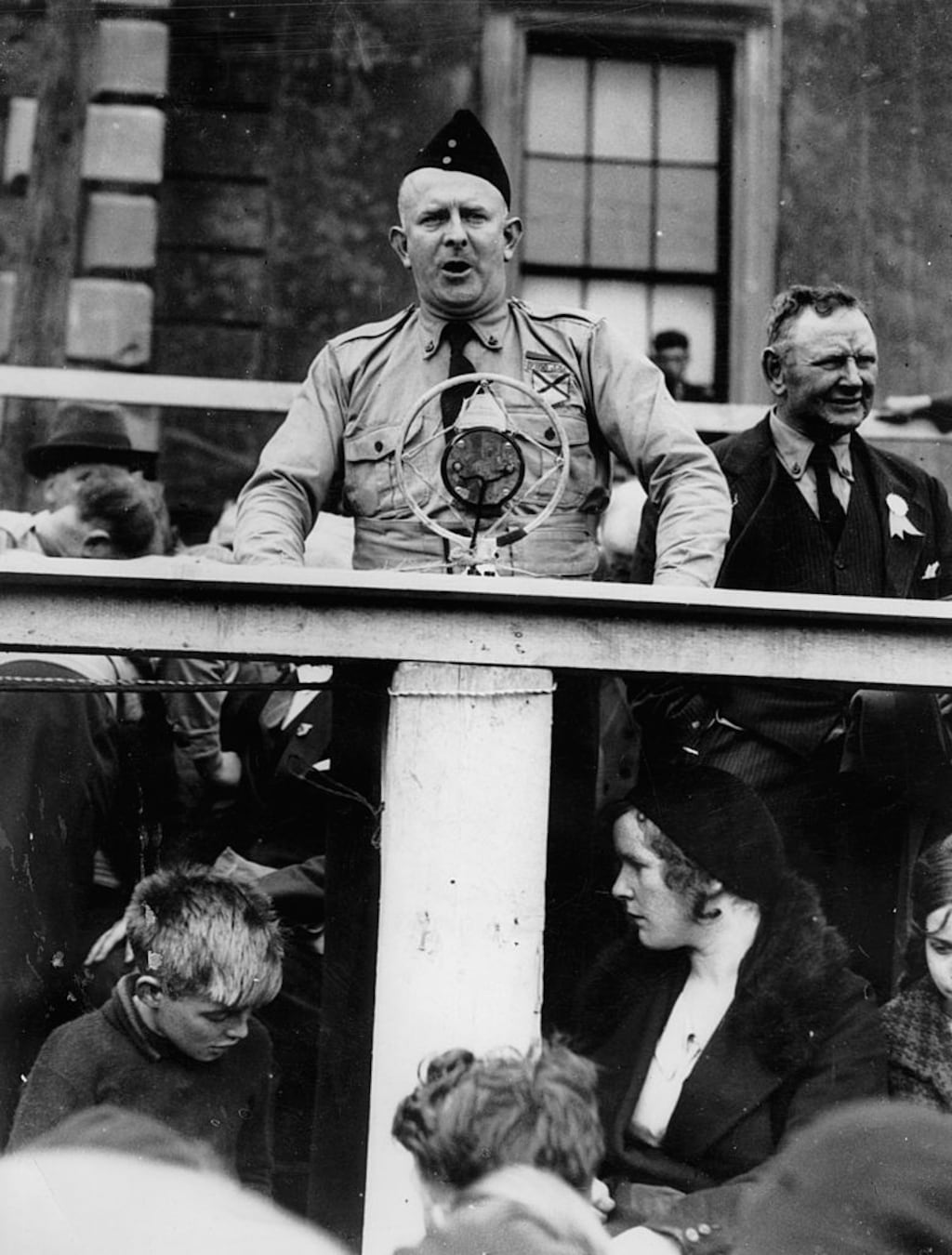That no monument has ever been erected to Eoin O’Duffy is perhaps unsurprising. But in her new book, The Way We Were – Catholic Ireland Since 1922, Mary Kenny wonders at a slightly greater mystery: why the Church was not formally represented at his funeral in 1944.
After all, O’Duffy was a devout Catholic whose commitment to the faith culminated in him leading his own crusade – albeit incompetently – to the Spanish Civil War.
That was widely seen in Ireland as a war of religion. And the victory of O’Duffy’s ally General Franco in 1939 was celebrated by a Solemn High Mass in Dublin’s pro-cathedral.
Moreover, when he died five years later, O’Duffy was given a state funeral, approved by his nemesis Eamon de Valera, even though Dev had never liked him and had effectively ended his career a decade earlier.
READ MORE
Kenny surmises it was O’Duffy’s homosexuality that upset the bishops. More specifically, she suggests, it was rumours of his affair with one of Dublin’s few flamboyantly gay personalities of the time, the actor Micheál MacLiammóir, which would not have escaped the all-hearing ear of Archbishop John Charles McQuaid.
The gruff Monaghan army man and the urbane London-born actor, who underwent a complete conversion to Irishness after moving to Dublin aged 18, would have made an odd couple. But that may have been part of the attraction.
Kenny quotes Denis Staunton of this newspaper, who researched MacLiammóir’s life, as saying that the actor was known to like “bigger, rougher men”.
In his own books, MacLiammóir limited himself to such chaste references as “my friend General O’Duffy”. But the affair was known to the playwright and novelist Mary Manning and actor Patrick Bedford, who both recalled O’Duffy collecting MacLiammóir from the stage door of the Gate in an “armoured car”.
The O’Duffy-MacLiammóir relationship is among the more colourful vignettes of Kenny’s chapter on 1930s Ireland, subtitled for three of the national obsessions then: “Dancing, Sex, and Communism.”
She is not the first to broach the subject of the presumed romance, or of O’Duffy’s sexuality in general and the extent to which it may have influenced his controversial career.
The subject was also broached in an RTE documentary in 1999 while, elsewhere, O’Duffy biographer Fearghal McGarry has contrasted his sportsman’s zeal for such concepts as “manliness” and the prevention of “effeminacy” with the complicated private life he seems to have led.
Drawing parallels with other moral crusaders of the era, including J Edgar Hoover and Lord Baden Powell, McGarry concluded: “It comes as no great surprise that the most outspoken nemesis of smoking, drinking and effeminacy in adolescent Irish males was a chain-smoking alcoholic homosexual.”
It may be a matter beyond the reach of history now, but I wonder if the internal struggles that O’Duffy experienced were also a factor in the strange later years of his friend Dan Hogan, brother of the murdered Michael, for whom the stand in Croke Park was named.
Although born in Tipperary, Dan Hogan moved to Clones and became O’Duffy’s close ally in two of his great causes, the IRA and Monaghan football.
When he married a Galway woman in 1924, O’Duffy was best man. And their friendship continued through both their meteoric rises in the new Free State, which in Hogan’s case made him chief of staff of the Defence Forces by 1927.
Then each fell from grace spectacularly. Hogan’s demise began when, during an argument in 1929, he struck the minister for defence.
He subsequently resigned and when he and his wife emigrated later that year, it was O’Duffy who drove them to the ship at Cobh and supplied a letter of introduction to influential friends in America.
O’Duffy was still a rising man then, his reputation as a brilliant organiser in both the GAA and as Garda commissioner intact. But the coming to power of de Valera would unhinge him, sending him into a downward spiral of bad judgment, further fuelled by drink and whatever demons he was fighting.
Meanwhile, as recorded in Terence Dooley’s book on Monaghan in The Irish Revolution 1912-23, O’Duffy’s friend came to a more mysterious end. Nothing is known of Hogan’s new life in America “except that one night in 1939, he walked out of the family home in New York, never to return.”
He left forwarding addresses in Dublin and Chicago, and his last pension cheque was cashed in 1941. The rest was silence, which has continued to this day. As Dooley concluded: “Dan Hogan had simply disappeared.”
















